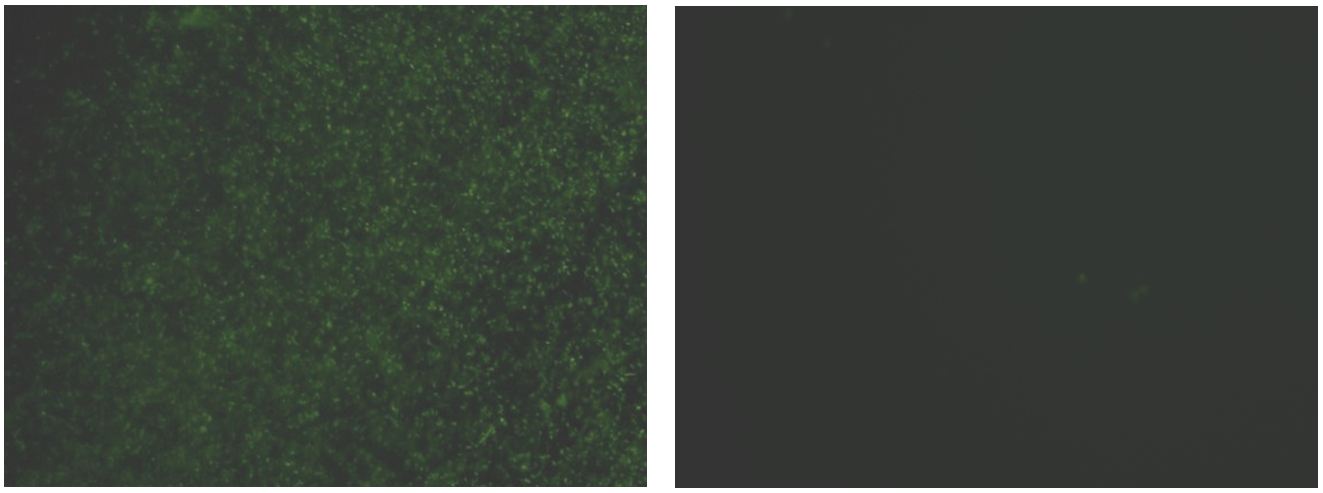Difference between revisions of "Part:BBa K1062004:Experience"
(→User Reviews) |
(→User Reviews) |
||
| Line 7: | Line 7: | ||
===User Reviews=== | ===User Reviews=== | ||
| − | <!-- DON'T DELETE --><partinfo> | + | <!-- DON'T DELETE --><partinfo>BBa_E0040 StartReviews</partinfo> |
<!-- Template for a user review | <!-- Template for a user review | ||
{|width='80%' style='border:1px solid gray' | {|width='80%' style='border:1px solid gray' | ||
|- | |- | ||
|width='10%'| | |width='10%'| | ||
| − | <partinfo> | + | <partinfo>BBa_E0040 AddReview number</partinfo> |
| − | <I> | + | <I>UsernEnter the review inofrmation here.ame</I> |
| + | |||
| + | We used this part as a reporter protein in a cell free system. We found that there was observable fluorescence from this part and experienced no issues with expressing it in a cell free system. | ||
| + | |||
|width='60%' valign='top'| | |width='60%' valign='top'| | ||
| − | |||
| − | + | |} | |
| + | <!-- End of the user review template --> | ||
| + | |||
| + | {|width='80%' style='border:1px solid gray' | ||
| + | |- | ||
| + | |width='10%'| | ||
| + | <partinfo>BBa_E0040 AddReview 3</partinfo> | ||
| + | <I>USTC_China iGEM13</I> | ||
| + | |width='60%' valign='top'| | ||
| + | In USTC_China iGEM13's project,we bulit the N-terminal TD1 modified GFP to make it is capable of transporting through skin barrier, then induced expression in BL21 and Bacillus Subtilis WB800N with IPTG and tested positive by SDS-PAGE and ultraviolet ultraviolet spectrometry. Students in Wen lab validated the efficient transdermal function of N-terminal TD1 modified GFP(not BBa_E0040 ). | ||
| + | [[Image:USTC_China_iGEM13_BBa_K1074006_1.png|thumb|left|800px|figure 1 SDS-PAGE of N-terminal TD1 modified GFP]] | ||
| + | [[Image:USTC_China_iGEM13_BBa_K1074006_2.JPG|thumb|left|600px|figure 2 Fluorescence detection of N-terminal TD1 modified GFP expression with and without IPTG induction]] | ||
| + | [[Image:USTC_China_iGEM13_BBa_K1074000_4.jpg|thumb|left|600px|figure 3 Our Transdermal test device]] | ||
| + | [[Image:USTC_China_iGEM13_BBa_K1074006_3.JPG|thumb|left|600px|figure 4 Results of transdermal test of N-terminal TD1 modified GFP and unmodified GFP]] | ||
Revision as of 13:19, 6 September 2018
This experience page is provided so that any user may enter their experience using this part.
Please enter
how you used this part and how it worked out.
Applications of BBa_K1062004
User Reviews
UNIQ336c7a00ab5d80bf-partinfo-00000000-QINU
|
•••
USTC_China iGEM13 |
In USTC_China iGEM13's project,we bulit the N-terminal TD1 modified GFP to make it is capable of transporting through skin barrier, then induced expression in BL21 and Bacillus Subtilis WB800N with IPTG and tested positive by SDS-PAGE and ultraviolet ultraviolet spectrometry. Students in Wen lab validated the efficient transdermal function of N-terminal TD1 modified GFP(not BBa_E0040 ). |




